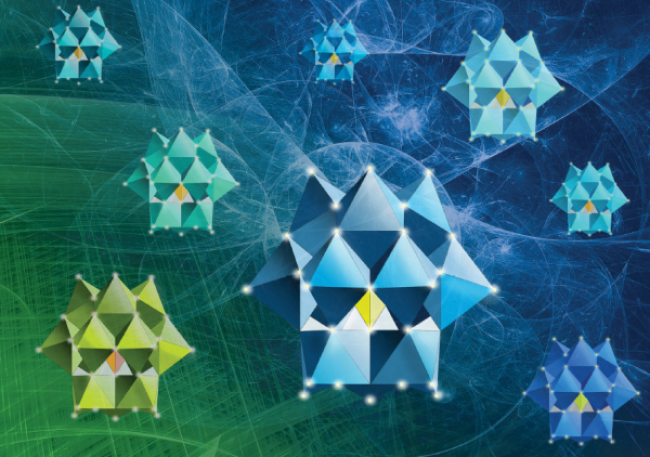Wednesday, 26 May 2021
POM-based materials as outstanding candidates for sustainable energy production and storage
In a review published in “Energy & Environmental Science” the recent advances of research on polyoxometalates (POMs) for energy-related applications are presented, highlighting both the great opportunities and the challenges of using these materials. This work was led by ICN2 Group Leader Prof. Pedro Gómez-Romero and by Dr Deepak Dubal, from Queensland University of Technology (Australia).

Polyoxometalates (abbreviated as POMs) are a class of nanomaterials (in the range of 1-10nm) whose structure consists of various metal ions linked together by oxygen atoms. The complex and ordered three-dimensional framework formed by these molecular units provide POMs with a maximal surface-to-bulk ratio and a unique ability to control reduction-oxidation reactions. The presence of many active sites in their molecules, indeed, make POMs very versatile and chemically active, properties that can be harnessed in devices for energy conversion and storage.
A review paper recently published in the Royal Society of Chemistry’s Journal of Energy & Environmental Science, and highlighted on its cover, discusses the recent advances of research on polyoxometalates for energy-related applications. The corresponding authors of the article are Prof. Pedro Gómez-Romero, leader of the ICN2 Novel Energy-Oriented Materials Group, and Dr Deepak Dubal, from Queensland University of Technology (QUT), Australia.
Prof. Gómez-Romero began his seminal work on polyoxometalates for energy storage when he was not yet a professor and when the study of these molecules was circumscribed to the realm of inorganic molecular chemistry. “This paper is a (hopefully) inspiring account of the evolution of POMs from ‘just’ molecules to materials,” he explains, “and a review of recent research on their use for energy applications since those pioneering times.”
After an introduction about the classification and properties of POM materials, the authors analyse their characteristics with special emphasis on their use in supercapacitors, batteries and catalytic applications. These three technologies are discussed thoroughly, each in an independent section, highlighting both the improvements brought about by POMs and the relevant challenges that remain to be faced.
Polyoxometalates can be integrated into supercapacitors to enhance their ability to store energy without cutting off their high power capability, as explained in the paper; though, difficulties are still encountered in securely anchoring these molecules to a host material and in achieving a very long-term cycling stability. In terms of battery applications, POMs offer advantages in different types of devices (lithium ion, sodium ion, and redox flow batteries), since they can be used as cathode materials (in a hybridised form) or as precursors to other high-surface-area active materials. Interesting results also come from studies on catalysis applications, where POM-based materials are employed in the chemical reactions that are at the base of water splitting systems and fuel cells.
Continued research in this field will certainly lead to a deeper understanding of POMs and their chemistry, as well as to the synthesis of new materials suited for energy-applications. Future developments could provide significant contributions to the transition towards a society relying on sustainable energy.
Reference article:
Michael R. Horn, Amandeep Singh, Suaad Alomari, Sara Goberna-Ferrón, Raúl Benages-Vilau, Nilesh Chodankar, Nunzio Motta, Kostya (Ken) Ostrikov, Jennifer MacLeod, Prashant Sonar, Pedro Gomez-Romero and Deepak Dubal, Polyoxometalates (POMs): from electroactive clusters to energy materials. Energy Environ. Sci., 2021,14, 1652-1700. DOI:10.1039/D0EE03407J

